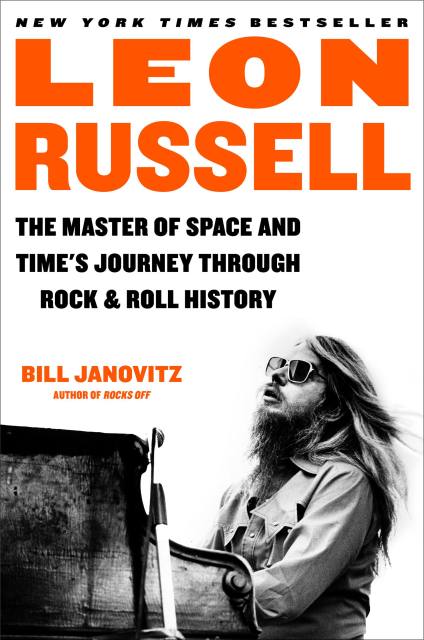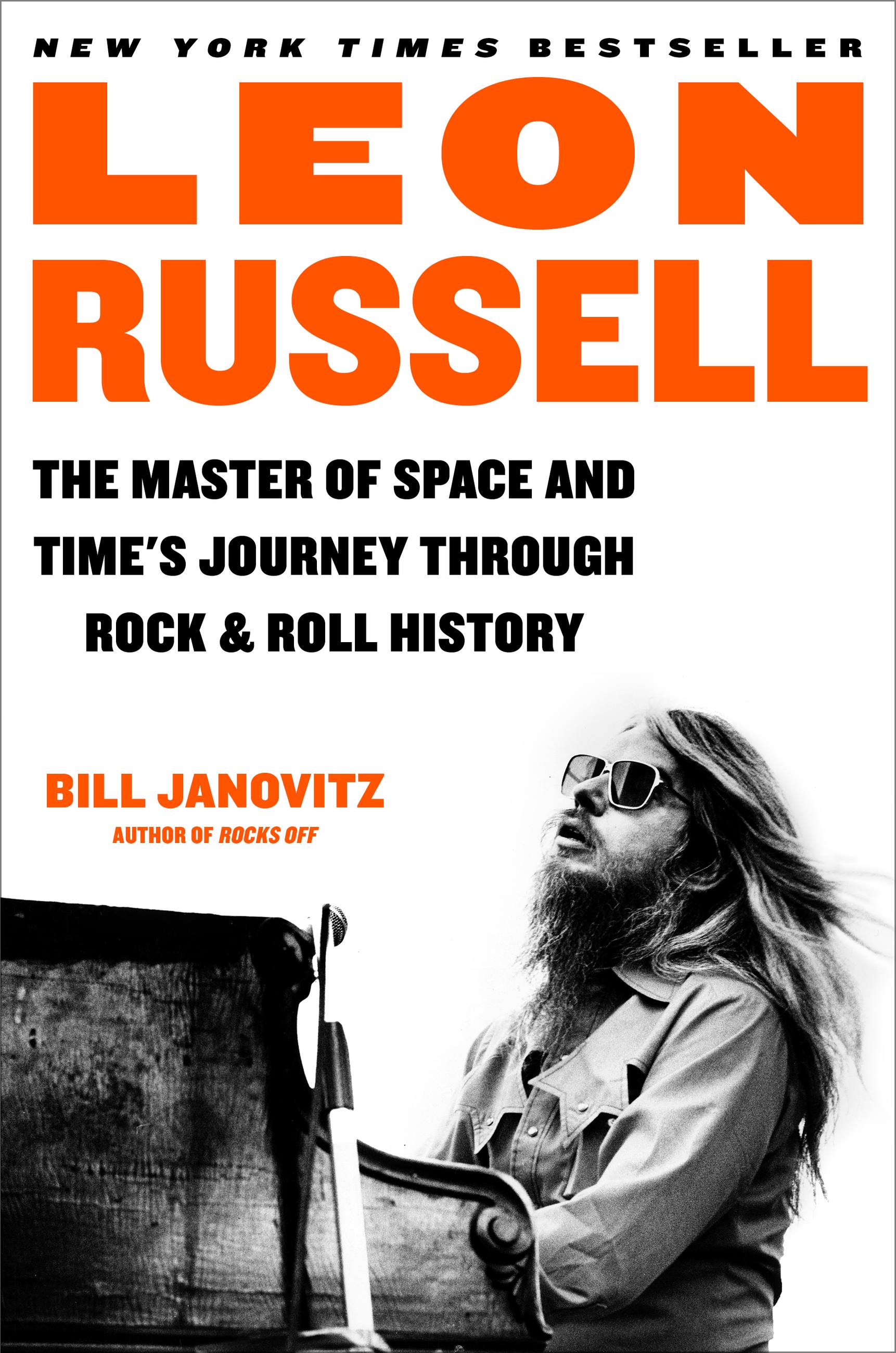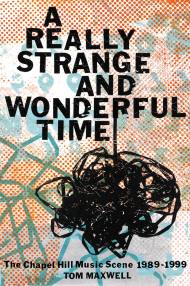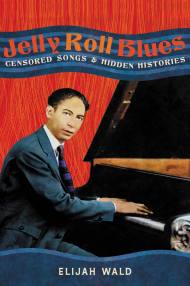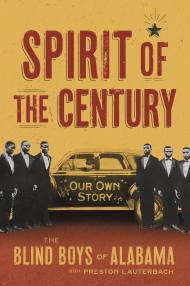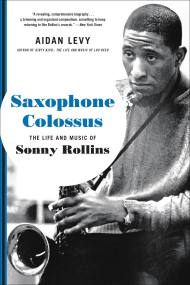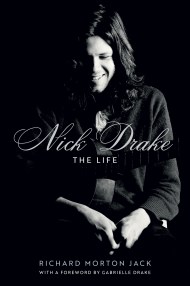Promotion
Use code MOM24 for 20% off site wide + free shipping over $45
Leon Russell
The Master of Space and Time's Journey Through Rock & Roll History
Contributors
Formats and Prices
Price
$31.00Price
$39.00 CADFormat
Format:
- Hardcover $31.00 $39.00 CAD
- ebook $15.99 $20.99 CAD
- Audiobook Download (Unabridged) $44.99
- Trade Paperback $24.99 $31.99 CAD
This item is a preorder. Your payment method will be charged immediately, and the product is expected to ship on or around March 14, 2023. This date is subject to change due to shipping delays beyond our control.
Also available from:
The definitive New York Times bestselling biography of legendary musician, composer, and performer Leon Russell, who profoudly influenced George Harrison, the Rolling Stones, Eric Clapton, Elton John, Willie Nelson, Tom Petty, and the world of music as a whole.
Leon Russell is an icon, but somehow is still an underappreciated artist. He is spoken of in tones reserved not just for the most talented musicians, but also for the most complex and fascinating. His career is like a roadmap of music history, often intersecting with rock royalty like Bob Dylan, the Stones, and the Beatles. He started in the Fifties as a teenager touring with Jerry Lee Lewis, going on to play piano on records by such giants as Frank Sinatra, The Beach Boys, and Phil Spector, and on hundreds of classic songs with major recording artists. Leon was Elton John’s idol, and Elton inducted him into the Rock and Roll Hall of Fame in 2011. Leon also gets credit for altering Willie Nelson’s career, giving us the long-haired, pot-friendly Willie we all know and love today.
In his prime, Leon filled stadiums on solo tours, and was an organizer/performer on both Joe Cocker’s revolutionary Mad Dogs and Englishmen tour and George Harrison’s Concert for Bangladesh. Leon also founded Shelter Records in 1969 with producer Denny Cordell, discovering and releasing the debut albums of Tom Petty, the Gap Band, Phoebe Snow, and J.J. Cale. Leon always assembled wildly diverse bands and performances, fostering creative and free atmospheres for musicians to live and work together. He brazenly challenged musical and social barriers. However, Russell also struggled with his demons, including substance abuse, severe depression, and a crippling stage fright that wreaked havoc on his psyche over the long haul and at times seemed to will himself into obscurity. Now, acclaimed author and founding member of Buffalo Tom, Bill Janovitz shines the spotlight on one of the most important music makers of the twentieth century.
Genre:
-
**Rolling Stone, Variety, The Houston Chronicle, and Best Classic Band's Best Music Books of 2023, The New York Post’s Best New Books to Read**
-
“Get ready to truly meet Leon Russell—one of music’s most unforgettable, colorful, and supremely gifted characters. Thanks to Bill Janovitz’s thoroughly captivating storytelling, here’s the definitive portrait as lively and essential as Russell himself.”Cameron Crowe
-
“There is only one man ever called the Master of Space and Time, and for good reason. Alongside his own majestic music, Leon Russell’s otherworldly cosmic touch on the keyboards has enhanced the songs of countless rock gods and goddesses, lifting them to the stratosphere. I was fortunate to be in the studio the night he played piano on the Flying Burrito Brothers’ version of the Stones' Wild Horses, and the purity of his playing made me weep. Bill Janovitz takes us on a deep dive through the swirling currents and down the rocky roads of a bonafide musical genius, capturing his huge heart in the process. Finally, a song for Leon.”Pamela Des Barres, author of I'm with the Band
-
“With Leon Russell, Bill Janovitz gets right down to business…. To say Bill Janovitz is ideally equipped to write this book is an understatement....Leon Russell didn’t just play rock ’n’ roll...He was rock ’n’ roll.”The Wall Street Journal
-
"An eccentric, contrary genius, Leon Russell is one of the most compelling, misunderstood, and neglected figures in rock history. Bill Janovitz has unraveled the riddle of the rock n'roll sphinx in this masterful, majestic book. His love and admiration for Russell bleeds from every paragraph, yet he pulls no punches when it comes to Leon's life or his work. Janovitz brings the circus of characters surrounding Russell to life in vivid, sometimes hilarious detail. His research is impeccable, unerring; his deeply considered opinions of Russell's music unimpeachable. This is a biography for the ages, as thrilling an inspired as any piano solo from Leon himself. You really want to know what it's like to be a flawed superstar in the fabulous world of rock? Here it is, on a fiery platter."Jimmy McDonough, author of Shakey: Neil Young's Biography
-
"Bill Janovitz has drawn back the curtain on this seminal yet incredibly complex and mysterious figure in American Music. After reading the book, I feel as though I've met the man, and certainly understand so much more about this singular musical genius. A detailed, absorbing read."Elliot Easton, The Cars
-
"Leon's journey in music was vast and deep. It takes a researcher and author of great insight and clarity to make sense of it and provide a map for the rest of us. Here's Bill doing exactly that."Mike Scott, The Waterboys
-
“Although I’ve read just about every music biography in existence, I do have some blind spots. Case in point: when I started reading this book, I thought Leon Russell was Leon Redbone. Janovitz has schooled me so thoroughly on this musical genius I’m certain I can teach a course on Leon at my local community college.”Jon Wurster, writer/performer/drummer (Superchunk, Bob Mould, Mountain Goats)
-
“The most ambitious effort yet to peel back the curtain on one of the most gifted, least understood rock artists of the 20th century.”The Los Angeles Times
-
“Through it all, Janovitz shows all the strengths of his previous books: an insider’s understanding of how music is made and a literary flair for bringing that process to life on the page….[He] also manages to be a sure-footed guide through Russell’s extremely complicated personal and professional life.”The Boston Globe
-
“Janovitz’s work on Russell’s peak years is impressively thorough and illuminating….Janovitz is unsparing in his recounting of Russell’s remoteness and insensitivity as it is to his deep talent and underappreciated influence, and there’s plenty of great, relatively unknown music along the way."Variety, Best Music Books of 2023
-
“Incredibly detailed."WBUR “Here and Now”
-
“Through highly-detailed archival research and nearly 140 fresh interviews, Janovitz…traces Russell through his upbringing in Tulsa, Oklahoma, early success as an A-list session musician in L.A. and outlier member of the fabled Wrecking Crew, key motivator and musical force in ensembles like Delaney & Bonnie and Friends and Joe Cocker’s Mad Dogs & Englishmen records and tours, and his own solo ups (and downs…and ups). But this is no hagiography…. Janovitz has definitely unlocked many of The Master’s secrets. It’s an important piece of rock journalism.”Houston Press
-
"Exhaustive study of Russell’s life and work...The good, bad and ugly, it’s all here.”MOJO
-
“In an illuminating new book, the incredible highs and devastating lows of the influential musician are remembered."The Guardian
-
“Bill Janovitz’s revelatory new biography…brims with reminders of Russell’s incongruous status….Janovitz’s book is more than documentation of an important career….Janovitz provides the receipts and offers a refreshing clarity, along with ample triumph and tragedy that explains both the brilliance of the legend and also the confounding lack of proper regard for his standing.”Houston Chronicle
-
“Janovitz tells Russell’s rollercoaster of a life and legacy in painstaking and vivid detail….[an] epic, a wide-ranging telling of a vital figure instrumental over decades, but one who can be overlooked.”SPIN
-
“Janovitz's great achievement in writing this book is thus how he illuminates the disparity between the public perception and the private realities of this galvanizing but often conflicted figure. Whether it's in discussing Russell's stage fright, mental health or physical frailties, the author is as candid on those topics as his subject (who passed in 2016), not to mention the friends, family and collaborators Janovitz also interviews….[He] adopts just the right pace… His prose proceeds at such a fleet pace that he covers large swathes of Leon Russell's history without belaboring the salient points or including so much minutiae to deliberately impress the reader with the considerable depth and breadth of his knowledge…. Janovitz is artfully discerning in his evaluations of the man's admittedly checkered body of work.”All About Jazz
-
“Leon Russell has all the makings of being the standard work on Leon Russell…. While Janovitz is clearly an admirer of Russell and the biography is authorized by Jan Bridges, Russell’s widow, this doesn’t stop Janovitz from applying a critical eye when he thinks it is appropriate…. Leon Russell not only fills in the historical gaps of Russell’s lifelong career in the music business, it also looks at Russell the person, and everyone reading the book will get a sense of knowing who Leon Russell actually was behind the various personas….Clearly, this is a must-read for all Leon Russell fans….A significant gap in the overall history of American music has been finally filled.”Americana UK
-
“Bill Janovitz…does a masterful job of telling the most comprehensive story yet of Russell, a musician as complicated as he was brilliant…. Janovitz has created the authoritative look on the life of one of the most original American rock musicians to come out of the 1970s.”Glide Magazine
-
“So well-researched and thorough….The book tracks, in unparalleled detail, Russell’s rise.”TulsaWorld
-
“Even more impressive than the sheer amount of raw knowledge Bill Janovitz puts on display is the way he expertly elaborates on Leon Russell’s familiar résumé highlights to create a full, three-dimensional portrait of a very complicated artist (and person)….[A] stunning new biography…. Janovitz gives such a detailed account of Russell’s life and work in…that, almost without fail, any given chapter will tempt readers to put down the biography for a moment to conduct a few Spotify searches and pull up songs they never knew had any connection to Russell….Janovitz is a reliable guide through weedy turf; he turns Russell’s career ups and downs into a grand story that will appeal to general readers as well as music fans….While Janovitz is adept at pushing out just how important a role Russell played in the development of popular music, he is equally savvy about just how badly, and how often, Russell undermined himself.”ArtsFuse
-
“Janovitz’s word-for-word writing is strong, and there can be no questioning the excellence of his research.”Psychedelic Baby Magazine
-
“Janovitz’s exhaustively captivating profile of Russell, one of rock’s most Zelig-like and complicated figures, is… a delicious masterwork of research and insights that could only come from a musician….Janovitz does music-lovers a great service by reminding us of the extraordinary talents and contributions of Russell.”NYSMusic.com
-
“Leon Russell is a wild tale, rendered in great detail by Buffalo Tom’s Bill Janovitz, reaching beyond rock anecdote to produce an empathetic portrait of a man of singular talent."Uncut
-
“Bill Janovitz's superb new biography….One of the beauties of this book is that in addition to being an excellent writer, precise with language and a fluid command that has you purring through the pages like a Cadillac, Mr. Janovitz also gets remarkably candid interviews from key people who shed valuable light on events….Mr. Janovitz has done a staggering amount of research, sourcing older interviews and weaving them in with the fresh ones to give it that added spring of an oral history while ensuring that all the major players are represented. He does this with such a skilled hand it feels like the liner notes of Derek and the Dominoes have come to life and are talking to you — like you're hanging with these dudes as they give their colorful accounts of what happened. If you love showbiz and rock-and-roll road stories, it's a cavalcade of riches….Bill Janovitz has delivered a unique biography and an all-sides portrait of Leon Russell, an artist who deserves another look if you didn't give him a fair first one. That's what I'm gonna do. Is it too late to become a ‘Leon Lifer’?”East Hampton Star
-
“A fascinatingly detailed account of Russell’s multifaceted career and numerous projects….Janovitz’s compulsively readable examination of Russell’s colorful life is the definitive account that this complex figure has long deserved.”Under the Radar
-
“Janovitz’s new biography…will flesh out your knowledge and then some. Along the way, the book provides a pretty good primer on the evolution of the music business from the mid-20th century through the early 21st. Detailed and breezily written, it’s an absorbing read….We’ll never fully know what made the mercurial Leon Russell the artist he was. But Janovitz’s deeply researched book fills in the picture more than anything has before. A critically astute writer, Janovitz also provides incisive assessments of the music.”BlogCritics.org
-
“An ambitiously comprehensive biography of a musical supernova…. [Janovitz] succeeds in creating a full portrait of a ‘Stranger in a Strange Land….’ Definitive.”Kirkus Reviews
-
“Russell’s rise is entertainingly chronicled and woven through with lively rock ’n’ roll picaresque.”Publishers Weekly
-
“A meticulously researched tome."Ft. Meyers Magazine
-
Praise for Bill Janovitz:
-
“Janovitz is an extremely engaging companion...he is consistently illuminating, not only defending his songs well, but inspiring you to think more strenuously about the selections you would add or delete.”The New York Times Book Review
-
“Rocks Off is an intense pleasure--a series of love letters plus a few notes of despair...Janovitz opened my mind.”The Wall Street Journal
-
“Through loving and informed close readings of fifty pivotal Stones songs, Bill Janovitz finds a new way to tell the band's story--and reminds even the biggest fans that for all the drama, gossip, and myth that has always surrounded the Rolling Stones, it is the music that will stand forever.”Alan Light, author of Let's Go Crazy and The Holy or the Broken
-
“Seasoned rock musician Bill Janovitz, co-founder of Buffalo Tom, evokes the gritty brilliance of the Rolling Stones in exactly the right way--by digging deep into their music. The 50 essays, each describing a key song in the band's 50 year career, weave Janovitz's fastidious research with his passion for music to make the Stones come alive on the page. By the time he's done Janovitz proves that the Stones catalogue isn't only rock 'n' roll, it's five decades of cultural history set in rhythm, blues and serious bad-assery.”Peter Ames Carlin, author of Sonic Boom and Homeward Bound
-
“His recently released biography of Russell, titled Leon Russell: The Master of Space and Time’s Journey Through Rock & Roll History, does genuine justice to the music and the man. Voluminous in size and multilayered in its composition, Janovitz’s text is a masterwork in rock biographies….[he] excels here in his discussion of Russell’s music and life…. No review can truly do this book the credit it deserves in its telling of Russell’s time on earth making music.”Counterpunch
-
"Janovitz has traded his guitar for a pen…. Janovitz masterfully chronicles the long, diverse, incredible career of Russell…. Even someone who is not a Russell fanatic – as is the case with me – but is interested in rock history will devour this well-researched, extremely readable look at a unique character in American music.”On Milwaukee
-
“Stellar….Janovitz, a founding member of Buffalo Tom, has crafted an extraordinary bio, one that captures the genius and sadness of an icon.”The Film Stage
-
“An impassioned telling.”The Aquarian
- On Sale
- Mar 14, 2023
- Page Count
- 592 pages
- Publisher
- Hachette Books
- ISBN-13
- 9780306924774
Newsletter Signup
By clicking ‘Sign Up,’ I acknowledge that I have read and agree to Hachette Book Group’s Privacy Policy and Terms of Use
